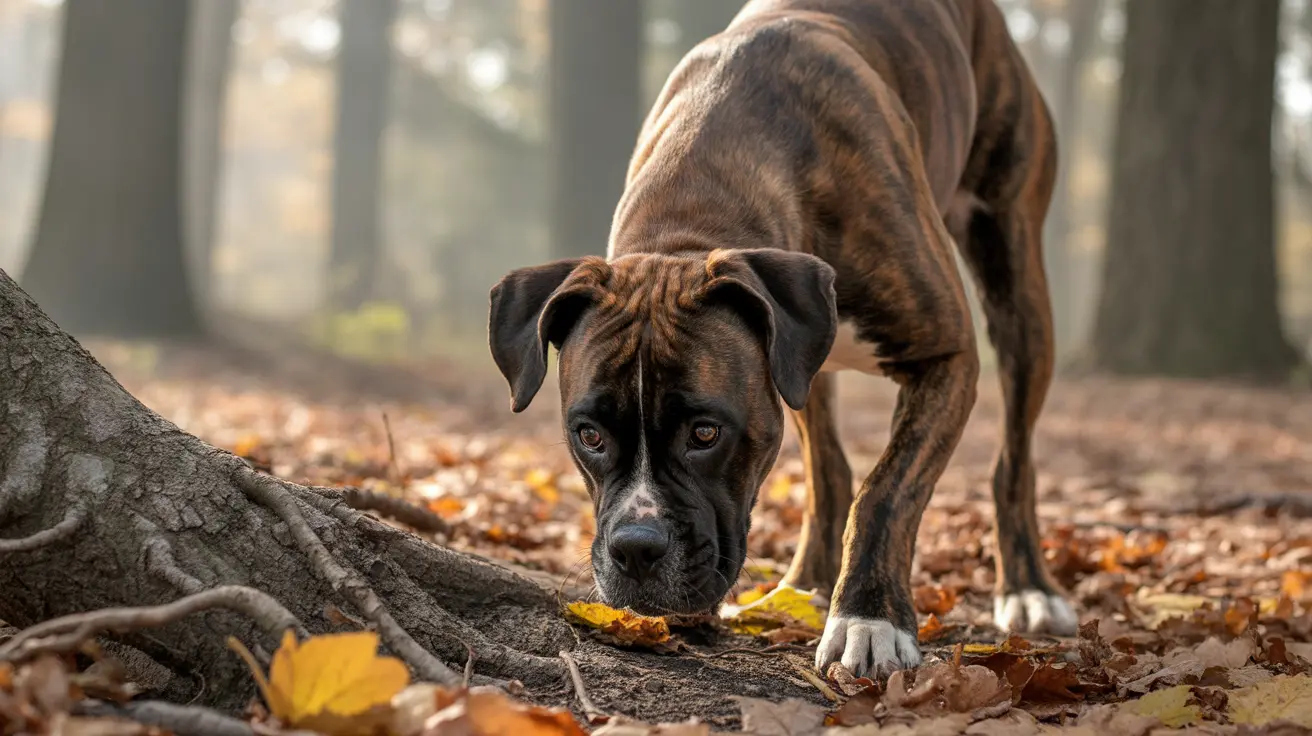Can Dogs Experience Love? The Science Behind Your Pet's Deep Emotional Connection
Every dog owner has wondered at some point whether their furry companion truly loves them or if those tail wags and cuddles are simply learned behaviors driven by food and shelter. The question "can dogs experience love?" touches the heart of one of humanity's most cherished relationships. While your dog may not compose love songs or write poetry, mounting scientific evidence suggests that dogs do indeed experience deep emotional connections that closely resemble what we call love.
The bond between humans and dogs has evolved over millennia, transforming from mutual cooperation into one of the most profound interspecies relationships on Earth. Modern research reveals that dogs have developed unique neurological and behavioral adaptations specifically for forming deep social bonds with humans. Understanding whether dogs can experience love isn't just about satisfying curiosity—it's about recognizing the depth of responsibility we have toward these remarkable companions who have chosen to share their lives with us.
Through examining the science of canine emotions, the role of bonding hormones, and the observable behaviors that indicate affection, we can better understand the true nature of our dogs' feelings and learn to strengthen these precious relationships.
The Neurochemistry of Canine Love: How Oxytocin Creates Bonds
The foundation of whether dogs can experience love lies in understanding the neurochemical processes that occur during bonding. Research has revealed that dogs and humans share remarkably similar mechanisms for forming emotional attachments, centered around oxytocin—often called the "love hormone" or "cuddle hormone."
When dogs interact with their owners through activities like gazing, petting, or simply being spoken to, both species experience a surge in oxytocin levels. This hormone creates secure bonds and triggers feelings of attachment and trust. Functional MRI studies have shown that dogs' brains activate emotional centers similarly to humans when they interact with their owners, with the reward centers lighting up in response to their human's scent and voice.
The oxytocin response in dogs serves multiple purposes beyond bonding. It reduces stress hormones, promotes social motivation, and enhances the dog's ability to read human emotions and gestures. This neurochemical foundation suggests that dogs don't merely tolerate human companionship—they're biologically equipped to form genuine emotional connections that benefit their overall wellbeing.
Understanding Canine vs. Human Love: Different but Genuine
While dogs can experience love, it's crucial to understand that canine affection differs fundamentally from human romantic love. Psychologist Clive Wynne and other researchers suggest that dogs form strong emotional bonds with humans that more closely resemble familial love rather than romantic attachment. This distinction is important for avoiding anthropomorphization while still recognizing the genuine nature of dogs' feelings.
Canine love is characterized by loyalty, empathy, and an unconditional acceptance that many humans find deeply moving. Dogs demonstrate remarkable forgiveness, rarely holding grudges against their owners even after negative experiences. Their love is expressed through consistent behaviors: seeking proximity, offering comfort during illness or distress, and showing genuine excitement upon reunion after separation.
The evolutionary basis for this type of love makes perfect sense. Dogs have been selectively bred and naturally adapted over thousands of years to form cooperative relationships with humans. Those individual dogs who could form stronger emotional bonds were more likely to receive care, protection, and resources, leading to the highly social and emotionally intelligent companions we know today.
Recognizing Signs Your Dog Loves You
Dogs express their affection through a variety of behaviors that, when understood properly, reveal the depth of their emotional attachment. These signs go far beyond simple conditioning and reflect genuine emotional responses rooted in neurochemical bonding processes.
Physical Expressions of Affection
One of the most obvious signs of canine love is the enthusiastic greeting dogs provide when their owners return home. This excited response, often accompanied by full-body wiggling and what behaviorists call a "helicopter tail," indicates genuine happiness and attachment. The intensity of this greeting typically correlates with the length of separation, suggesting that dogs genuinely miss their owners.
Physical contact behaviors also reveal deep emotional bonds. When dogs choose to sleep with their owners, rest their heads on them, or lean against them, they're demonstrating a profound sense of security and trust. These behaviors indicate that the dog views their owner as a safe haven—a core component of attachment relationships.
Communication and Eye Contact
Perhaps one of the most significant indicators of canine love is soft, sustained eye contact. Unlike other species where direct eye contact can be threatening, dogs have evolved a special ability to maintain gentle eye contact with humans. This behavior triggers oxytocin release in both species and strengthens the emotional bond. Dogs have even developed a special facial muscle that allows them to raise their inner eyebrows, creating more expressive, puppy-like eyes that trigger nurturing responses in humans.
Licking represents another form of communication that extends from puppyhood behavior designed to maintain relationships. When adult dogs lick their owners, they're continuing this bonding behavior that serves to strengthen social connections and express affection.
Trust and Sharing Behaviors
Dogs demonstrate love through acts of trust and sharing. When a dog brings their favorite toy to their owner, they're not just inviting play—they're sharing something valuable and demonstrating trust. This behavior indicates that the dog views their owner as worthy of their most prized possessions.
Following behavior, where dogs choose to stay close to their owners throughout the day, reflects both attachment and a sense of security. Dogs who love their owners often exhibit this "velcro dog" behavior, preferring to remain in their human's presence rather than exploring independently.
Building and Strengthening the Human-Dog Bond
Understanding that dogs can experience love brings with it the responsibility to nurture and strengthen these emotional connections. Building a strong bond with your dog involves consistent, positive interactions that promote oxytocin release and reinforce trust.
Quality Time and Positive Reinforcement
Spending quality time with your dog through shared activities significantly enhances your emotional connection. Play sessions, training exercises conducted with positive reinforcement, and simple companionship all contribute to bond formation. These interactions should be based on mutual respect and understanding rather than dominance or control.
Physical affection, when welcomed by the dog, plays a crucial role in bonding. Gentle petting, especially around the face and head, can trigger stress reduction and promote feelings of security. However, it's important to respect your dog's boundaries and read their body language to ensure these interactions are positive experiences.
Consistency and Trust Building
Trust forms the foundation of canine love, and building this trust requires consistency and patience. Dog matchmaker Heather Dickeson's three-three-three rule provides valuable guidance: dogs need three days to decompress in a new environment, three weeks to learn routines, and three months to feel truly at home. This timeline reminds us that deep emotional bonds take time to develop.
Outdoor adventures and new experiences shared together can significantly strengthen your bond. These activities provide opportunities for your dog to rely on you for guidance and protection while exploring the world, reinforcing your role as a trusted companion and protector.
The Impact of Separation and Loss on Canine Emotions
The depth of dogs' emotional capacity becomes particularly evident when examining their responses to separation and loss. Dogs who have formed strong attachments often experience what can only be described as heartbreak when separated from their bonded humans or canine companions.
Separation anxiety in dogs manifests through behaviors like excessive vocalization, destructive activity, and depression-like symptoms. These responses indicate that dogs genuinely miss their companions and experience distress during separations. The intensity of these reactions often correlates with the strength of the emotional bond, providing further evidence that dogs form meaningful attachments.
When dogs lose a bonded companion, whether human or canine, they may exhibit grief-like behaviors including loss of appetite, decreased activity, and searching behaviors. These responses suggest that dogs understand loss and experience emotional pain, further supporting the argument that their capacity for love is genuine and profound.
Socialization and Its Role in Canine Bonding
A dog's ability to form strong emotional bonds is significantly influenced by early socialization experiences. Dogs who receive proper socialization during their critical developmental periods are better equipped to form secure attachments with both humans and other dogs throughout their lives.
Early positive interactions with humans teach dogs that people can be trusted and provide security. This foundation enables them to develop the confidence necessary for forming deep emotional connections. Conversely, dogs who lack proper socialization may struggle to form secure attachments, though with patience and positive experiences, these bonds can still develop over time.
The social nature of dogs means they're capable of forming multiple meaningful relationships simultaneously. A well-socialized dog can maintain strong bonds with family members, other household pets, and even regular visitors, demonstrating their remarkable capacity for love and attachment.
Frequently Asked Questions
- How long does it take for a dog to love their owner?
Based on research and expert recommendations like the three-three-three rule, dogs typically need about three months to form deep emotional bonds with new owners. However, initial signs of attachment and trust can develop within days or weeks through consistent positive interactions and care.
- Can dogs love their owners more than other family members?
Yes, dogs often form stronger bonds with one particular family member, usually the person who provides the most care, training, and positive interaction. This doesn't mean they don't love other family members, but they may show preference for their primary bonded human.
- Do dogs experience heartbreak when their owner dies?
Dogs can experience grief-like behaviors when they lose a bonded owner, including depression, loss of appetite, and searching behaviors. While we can't know if this constitutes "heartbreak" in the human sense, their neurochemical and behavioral responses indicate genuine emotional distress.
- Is the love between dogs and humans the same as human romantic love?
No, canine love more closely resembles familial or platonic love rather than romantic love. Dogs experience attachment, loyalty, and affection through similar neurochemical pathways as humans, but their emotional experience differs fundamentally from human romantic relationships.
- Can dogs love other dogs the same way they love humans?
Dogs can form strong emotional bonds with other dogs, characterized by mutual protection, happiness upon reunion, and distress during separation. However, dogs have evolved specific adaptations for bonding with humans that make human-dog relationships unique in their intensity and nature.
- How can I tell if my dog truly loves me or just wants food?
Genuine love is demonstrated through behaviors that occur regardless of feeding times: seeking physical closeness, maintaining soft eye contact, showing excitement upon your return, bringing you toys, and displaying protective behaviors. These actions indicate emotional attachment beyond basic survival needs.
- Do all dog breeds have the same capacity for love?
While all dogs share the basic neurochemical mechanisms for bonding, individual dogs and certain breeds may express love differently. Some breeds are more naturally affectionate or demonstrative, but the capacity for forming emotional bonds exists across all breeds, though it may be expressed in various ways.
Conclusion
The scientific evidence overwhelmingly supports that dogs can experience love, though their emotional experience differs from human romantic love. Through the release of oxytocin and activation of reward centers in their brains, dogs form genuine emotional bonds that bring them joy, comfort, and security. These relationships are characterized by loyalty, empathy, and unconditional acceptance that enriches the lives of both species.
Recognizing that dogs can experience love brings with it a profound responsibility. These remarkable companions have chosen to share their lives with us, forming emotional bonds that can span their entire lifetime. Understanding and nurturing these relationships not only enhances our dogs' wellbeing but also deepens one of humanity's most enduring and rewarding partnerships. The love between dogs and humans represents a unique evolutionary achievement—a cross-species emotional connection that continues to enrich our lives in countless ways.






